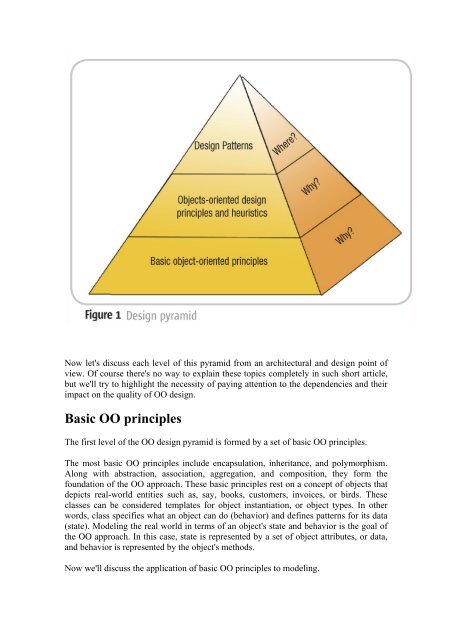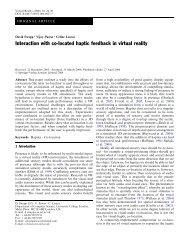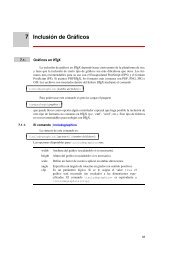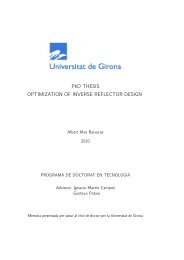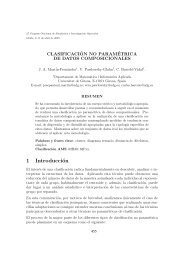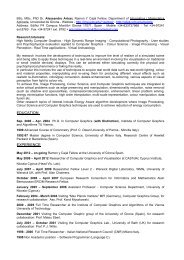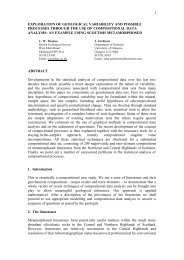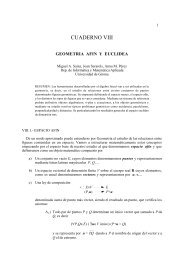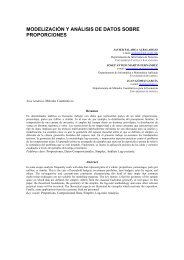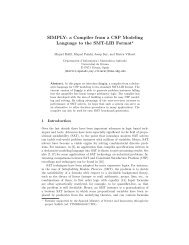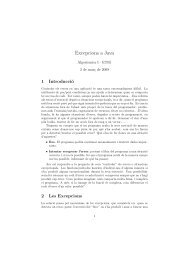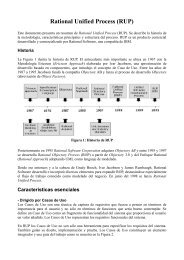The OO Design Pyramid
The OO Design Pyramid
The OO Design Pyramid
- No tags were found...
You also want an ePaper? Increase the reach of your titles
YUMPU automatically turns print PDFs into web optimized ePapers that Google loves.
Now let's discuss each level of this pyramid from an architectural and design point ofview. Of course there's no way to explain these topics completely in such short article,but we'll try to highlight the necessity of paying attention to the dependencies and theirimpact on the quality of <strong>OO</strong> design.Basic <strong>OO</strong> principles<strong>The</strong> first level of the <strong>OO</strong> design pyramid is formed by a set of basic <strong>OO</strong> principles.<strong>The</strong> most basic <strong>OO</strong> principles include encapsulation, inheritance, and polymorphism.Along with abstraction, association, aggregation, and composition, they form thefoundation of the <strong>OO</strong> approach. <strong>The</strong>se basic principles rest on a concept of objects thatdepicts real-world entities such as, say, books, customers, invoices, or birds. <strong>The</strong>seclasses can be considered templates for object instantiation, or object types. In otherwords, class specifies what an object can do (behavior) and defines patterns for its data(state). Modeling the real world in terms of an object's state and behavior is the goal ofthe <strong>OO</strong> approach. In this case, state is represented by a set of object attributes, or data,and behavior is represented by the object's methods.Now we'll discuss the application of basic <strong>OO</strong> principles to modeling.


